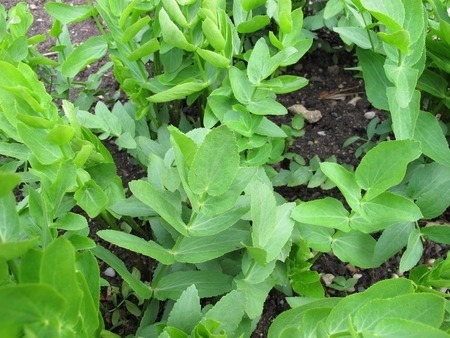
We don’t often sing the praises of a root vegetable, but one that is returning to the garden allotment is skirret, water parsnip, sugar root or crummock. The name of skirret is derived from the dutch word ‘Suikerwortel’ meaning sugar root. It was once much admired in Tudor times if not before as a highly valuable root vegetable and much has been made of its popularity with Henry VIII. Pliny The Elder comments on it back in Roman times as does John Worlidge in his book 1677 Systema Horticultirae or ‘The Art Of Gardening‘.
Skirret (Sium sisarum) belongs to the umbellifers or Apiaceae family as it is now known. It is reminiscent of cow parsley but with froths of white flowers like Queen Anne’s Lace. It is also a perennial and produces clusters of sweet long white roots.
It was highly popular as a vegetable in the Middle Ages throughout Europe having been brought from its original home of China. It is often eaten raw with a flavour similar to carrots and parsnip. It can be cooked like beetroot, boiled, stewed and roasted for use in soups or even stir fried. Some treat it as an alternative to chicory making a rough form of coffee. Like many other root vegetables such as parsnip it benefits from being consumed after a cold frost which sweetens it up. That sweet flavour also allows its use in fritters, chips and in pies. If allowed to grow too long, the core becomes woody and must be removed before cooking.
It is claimed in health terms to help ameliorate the effects of indigestion although it might also contribute to that unpleasant phenomenon too. It has also been tried for ameliorating urinary, kidney and liver disorders.
Growing Skirret
Seeds which are not that easy to find are sown in winter or early spring under a cold frame. They are often slow to germinate but once they do, need to be thinned to within 1 foot of each other. They are best planted in a deep soil which has been well dug and manured. It is possible to start the seeds indoors about 2 months before the last frosts.
The best method of growing this vegetable is by root division. Small divisions are made by growing under a cold frame and then planting out in Summer. It requires watering regularly – in fact it is highly thirsty, hence the name of water parsnip. If it doesn’t receive enough water, it becomes coarse and woody.
Roots are generally harvested after the first frosts in October. To maintain the harvest, cover the plant with mulch and over winter in a cold frame. It needs shade in hot weather. The soil pH can be anywhere between acidic and alkaline. Its hardiness zone is 5 to 9.
Planting Depth: 1/2”
Soil Temp. Germination: 65-70˚F
Days to Germination: 30
Plant Spacing: 18”
Row Spacing: 18”
Days To Maturity: 120-140
Part Shade, Wet Climate
Another plant which would be worth investigating from the same family for its stems is angelica and celery.

Leave a Reply